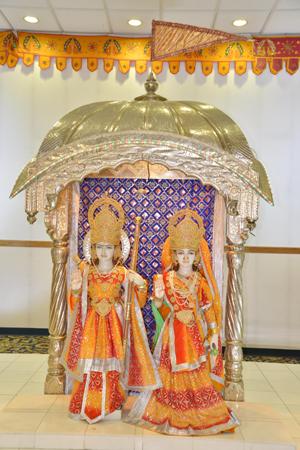Rama, the maryada-purushottama and adarsha purusha (the person with all pure qualities/virtues and the ideal person) is the most glorious avataras (incarnations) of Vishnu – the seventh among the ten avataras of Vishnu. He upheld the highest ideals of truth and justice and is worshipped by all Hindus all over the world. The sage Valmiki in his epic Ramayana has presented Rama and His consort Sita with all the great virtues one can think of in this life. Ramayana, the epic has traveled all over Asia and found a place in the epics and writings in all Asian languages as well as in other art forms – music, dance, paintings, etc; of course with variations according to the local customs of the country.
Therefore it is said:
“Yaavat Sthaasyanti Girayah, Saritasch Maheetale
Taavad Ramayanakatha Lokeshu Pracharishyati.”
( As long as there are mountains and rivers on the earth the story of Ramayana will remain in the universe.)
The very first work in Sanskrit (adi kavya) – Ramayana of Valmiki has influenced the whole of India and the story of Rama and Sita is written in all Indian languages and dialects. All art forms of India are greatly influenced by the story of Ramayana.
The adarsha purusha Rama carried his bow and arrows at all times which symbolizes his alertness and readiness to fight against evil and thus establish justice and peace. His wife Sita is the embodiment of all the virtues of a woman – dignity, service to elders, commitment to the duties of a wife, compassion, love, humility and so on. She is worshipped by Hindus as the mother of the universe.

